The Bulgarian Navy in 1914
Between the Aegean and the black sea
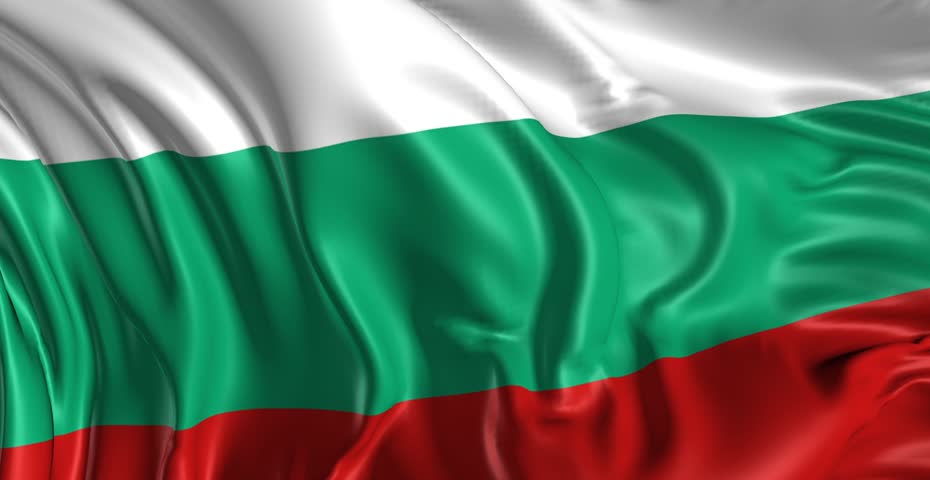
Bulgaria in 1914 had a navy following an increase in its territory to the east and an outlet to the Black Sea, acquired from the war of 1878 against the Ottoman Empire. Subsequently, in 1885 the Eastern Rumelia was also obtained, guaranteeing access to the Aegean Sea. In 1896 the nucleus of the Bulgarian fleet consisted of three armed vapors assisted by a small sailing ship, the Asen. Seven other small steamers served on the Danube, all obtained from Russia, which saw in it the opportunity of an ally, even of a protectorate in the Balkans. At that time, France was also very visible to set up the Bulgarian fleet. The gunboat Nadezhda was commanded in France, and later the gunboat Kaliarka, and it was a French officer, Paul Pichon, who commanded it until 1908. The French aid was important, supplemented by funds representing 20% of the budget of the Bulgarian army.
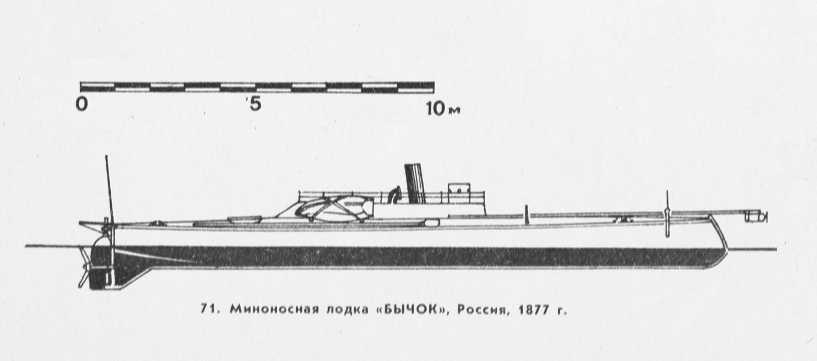
Blueprint of the Bychok, Vasil Levski class
The first Bulgarian naval program was established in 1903 and was based on the commissioning of 16 torpedo boats and port defense installations in 1908, but eventually, it was translated into 6 torpedo boats, 3 floating torpedo batteries and 4 heavy coastal batteries. But other more ambitious plans, including destroyers, minesweeper and submersibles were rejected in 1910 for lack of funds and interest of the Bulgarian population. Moreover, good relations with Russia made the creation of a powerful fleet useless, especially since the Black Sea fleet would have totally outclassed it.
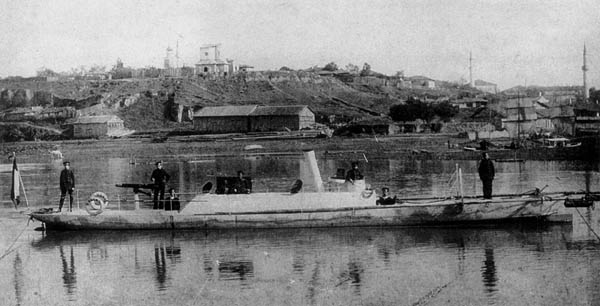
Mine-sweeping motor-boat “Kalatserka”
The first Balkan War (1912)
The big deal for Bulgaria in 1912 was the first Balkan war. The country did not take advantage of it to increase its fleet, despite numerous proposals for European shipyards. All these offers were declined. During this war, Bulgaria deployed the Nadezhda, 6 torpedo boats, the minesweeper Kamchija, assisted by 5 cargo ships. Some armed yachts guarded the Danube. This “fleet” kept the coasts, protected the meager Bulgarian merchant traffic and its supply routes, and provided logistical support to the troops. One of the most important events was the torpedoing of the Turkish cruiser Hamidieh by the torpedo-ship Draski on 21 November 1912. During the Second Balkan War the Bulgarian fleet was interned in Sevastopol and took no part in the operations. At the end of the conflict, Bulgaria lost its few ports in the Aegean Sea.
WW1 for Bulgaria
In 1915, Bulgaria was surrounded by neutral countries, sympathizers of Russia, but also and especially by Austria-Hungary and more menacing Turkey. Indeed, in October, Bulgaria joined the central empires. Its weak fleet was not a threat to Russian traffic, but by opening its three Black Sea ports to the Austrian, German and Turkish ships, gave them unexpected access to this strategic sector. The Bulgarians received from Germany the submarine No. 18, of the UB1 type, which made some sorties from Varna in 1918. In 1917, 6 light minesweepers were obtained from the Germans.
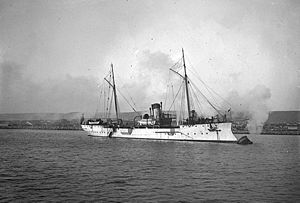
Gunboat Nadezha
In 1919, the fate of Bulgaria was settled in the Treaty of Neuilly sur Seine. Its territory was amputated to the south in favor of Greece, and it lost what remained of access to the Aegean Sea. In addition, his navy was formally dissolved and reduced to a maritime police force. 6 patrollers were allowed (including 4 recaptured torpedo boats). The Nadezhda gunboat was dismantled in 1918.
8 torpedo boats: 2 class Vasil Levk (1871), slow and equipped with a spar torpedo; More recently: 6 torpedo boats (Droski class).
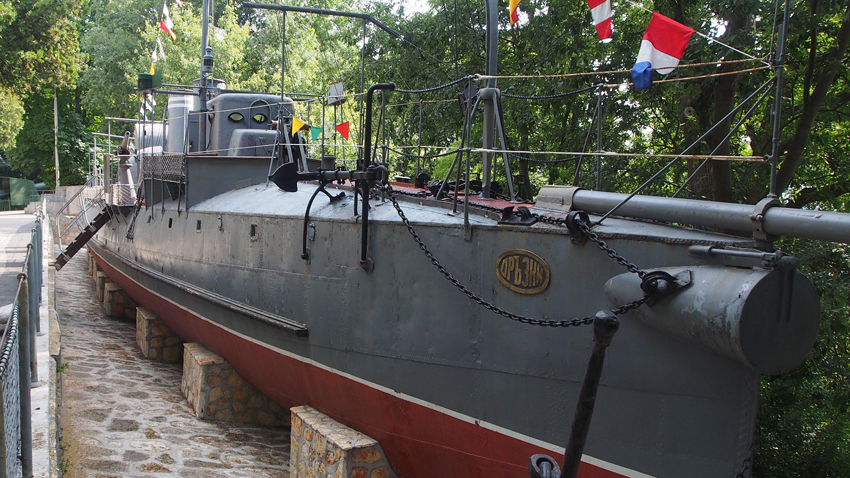
Draski TB museum
1 gunboat: Nadezhda (1898)
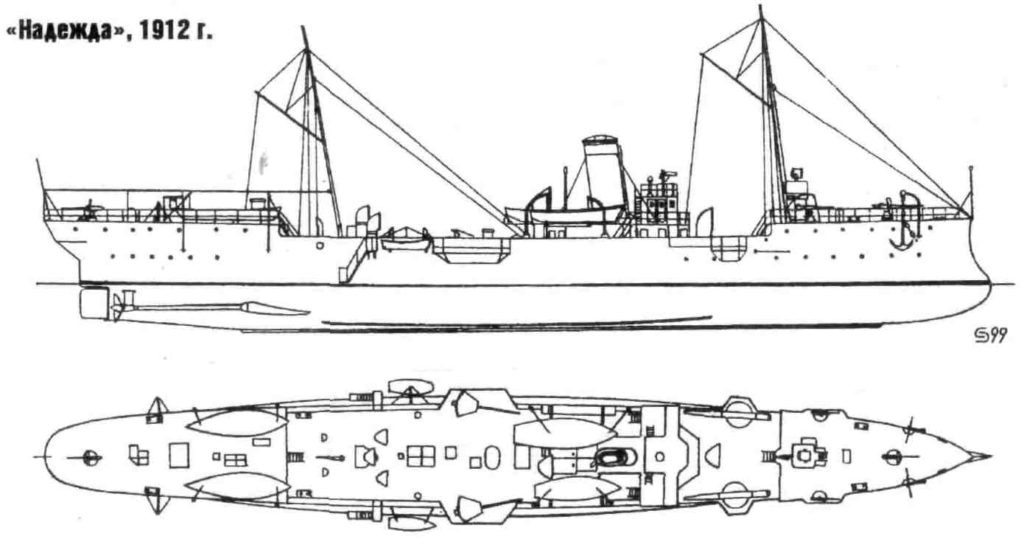
Blueprint of the gunboat Nadezhda (credits vimpsel.boinaslava.net)
More: http://www.navypedia.org/ships/bulgaria/bu_dd_nadezhda.htm
1 minesweeper: Kamchija (1906)
13 Miscellaneous: 3 floating torpedo batteries, and the Strela, a training ship.
Src:
http://www.navypedia.org/ships/bulgaria/bu_dd_drzki.htm

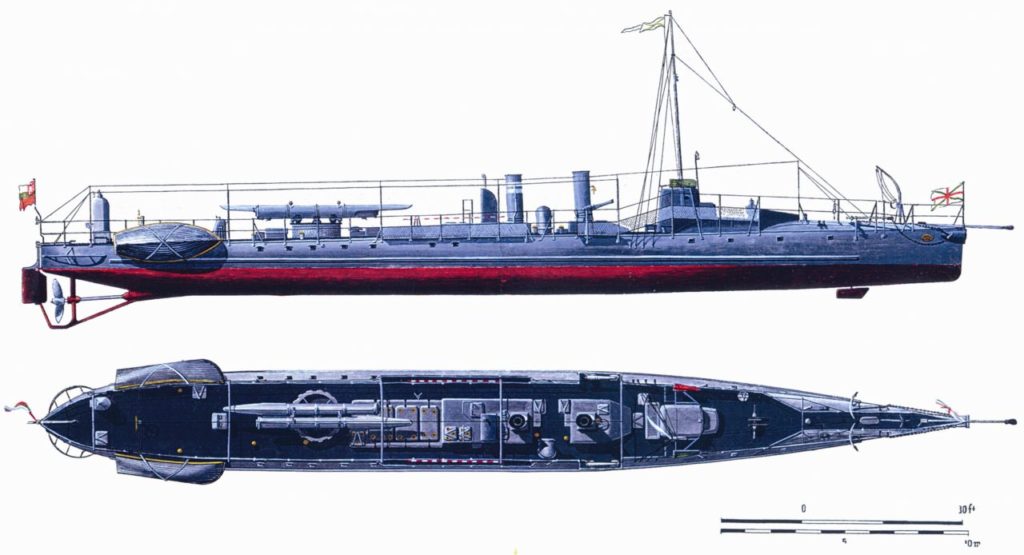
 Latest Facebook Entry -
Latest Facebook Entry -  X(Tweeter) Naval Encyclopedia's deck archive
X(Tweeter) Naval Encyclopedia's deck archive Instagram (@navalencyc)
Instagram (@navalencyc)





 French Navy
French Navy Royal Navy
Royal Navy Russian Navy
Russian Navy Armada Espanola
Armada Espanola Austrian Navy
Austrian Navy K.u.K. Kriegsmarine
K.u.K. Kriegsmarine Dansk Marine
Dansk Marine Nautiko Hellenon
Nautiko Hellenon Koninklije Marine 1870
Koninklije Marine 1870 Marinha do Brasil
Marinha do Brasil Osmanlı Donanması
Osmanlı Donanması Marina Do Peru
Marina Do Peru Marinha do Portugal
Marinha do Portugal Regia Marina 1870
Regia Marina 1870 Nihhon Kaigun 1870
Nihhon Kaigun 1870 Preußische Marine 1870
Preußische Marine 1870 Russkiy Flot 1870
Russkiy Flot 1870 Svenska marinen
Svenska marinen Søværnet
Søværnet Union Navy
Union Navy Confederate Navy
Confederate Navy Armada de Argentina
Armada de Argentina Imperial Chinese Navy
Imperial Chinese Navy Marinha do Portugal
Marinha do Portugal Mexico
Mexico Kaiserliche Marine
Kaiserliche Marine 1898 US Navy
1898 US Navy Sovietskiy Flot
Sovietskiy Flot Royal Canadian Navy
Royal Canadian Navy Royal Australian Navy
Royal Australian Navy RNZN Fleet
RNZN Fleet Chinese Navy 1937
Chinese Navy 1937 Kriegsmarine
Kriegsmarine Chilean Navy
Chilean Navy Danish Navy
Danish Navy Finnish Navy
Finnish Navy Hellenic Navy
Hellenic Navy Polish Navy
Polish Navy Romanian Navy
Romanian Navy Turkish Navy
Turkish Navy Royal Yugoslav Navy
Royal Yugoslav Navy Royal Thai Navy
Royal Thai Navy Minor Navies
Minor Navies Albania
Albania Austria
Austria Belgium
Belgium Columbia
Columbia Costa Rica
Costa Rica Cuba
Cuba Czechoslovakia
Czechoslovakia Dominican Republic
Dominican Republic Haiti
Haiti Hungary
Hungary Honduras
Honduras Estonia
Estonia Iceland
Iceland Eire
Eire Equador
Equador Iran
Iran Iraq
Iraq Latvia
Latvia Liberia
Liberia Lithuania
Lithuania Mandchukuo
Mandchukuo Morocco
Morocco Nicaragua
Nicaragua Persia
Persia San Salvador
San Salvador Sarawak
Sarawak Uruguay
Uruguay Venezuela
Venezuela Zanzibar
Zanzibar Warsaw Pact Navies
Warsaw Pact Navies Bulgaria
Bulgaria Hungary
Hungary

 Bundesmarine
Bundesmarine Dutch Navy
Dutch Navy Hellenic Navy
Hellenic Navy Marina Militare
Marina Militare Yugoslav Navy
Yugoslav Navy Chinese Navy
Chinese Navy Indian Navy
Indian Navy Indonesian Navy
Indonesian Navy JMSDF
JMSDF North Korean Navy
North Korean Navy Pakistani Navy
Pakistani Navy Philippines Navy
Philippines Navy ROKN
ROKN Rep. of Singapore Navy
Rep. of Singapore Navy Taiwanese Navy
Taiwanese Navy IDF Navy
IDF Navy Saudi Navy
Saudi Navy Royal New Zealand Navy
Royal New Zealand Navy Egyptian Navy
Egyptian Navy South African Navy
South African Navy






























 Ukrainian Navy
Ukrainian Navy dbodesign
dbodesign